Titandeath Read online
Page 5
As the Legiones Astartes had their fleets, so did the Legios Titanica. Titans were the galaxy’s most potent fighting machines, but they were of no use if their wreckage was scattered to the void before they set down upon the battlefield. Any enemy commander with a modicum of sense would do his level best to ensure they never reached the warzone, and so to get where they were needed, Battle Titans required protection of the most powerful sort.
At the centre of the fleet were two giant conveyors of Titans, the Tantamon and the Artemisia: huge, unlovely craft, more akin to the cargo hulks of the chartist captains than the sleek glories of Imperial warships. Their permanent structure was spindly; most of their volume was taken up by maniple drop-ships. The Titan conveyors carried six of these detachable craft apiece: long, hexagonal transporters that were little more than giant engine arrays clustered around echoing hangars and stores, their undersides bulky with grav impellers and retro thrusters. Enormous amounts of power were required to bring Titans down to a planet’s surface, and nigh on incredible amounts to deliver an entire maniple as these ships were designed to do; therefore each drop-ship had a reactor of a class more usually installed upon a frigate, squashed into its upper parts by cunning engineering.
When the drop-ships were deployed, the conveyors were left as bare skeletons shaped like letter Hs. The command superstructure projected from the bar of the H dorsally and ventrally, extending far enough out that the sensor clusters mounted atop its spires could see over the drop-ships while they were still attached.
Because they were designed to deliver the mightiest ground weapons available to mankind into zones of intense warfare, the conveyors were heavily armed. Both the upper and lower surfaces of the sticks of the H were equipped with castle walls, behind which the giant robotic infantry of Knight warsuits could shelter and add their weapons to those of the ship during battle. Many guntowers bearing powerful energy cannons interrupted the walls’ length, while across the bar of the ship, angled batteries of macrocannons pointed fore and aft.
Around the Tantamon and Artemisia swarmed a great support fleet. Smaller conveyors stacked with one-Titan coffin ships flew in their shadow, as did supply barques, the void-castella of the Legio’s auxiliary Knightly house, and troop transports. An entire battlegroup escorted them, with seconded Imperial vessels supplementing the formidable power of the Mechanicum vessels permanently attached to the Legio. A battleship, cruisers, frigates, corvettes… Together, it was a collection fit to rival a subsector fleet.
The final element of this armada, and perhaps the most powerful vessel of all, was the Ark Mechanicum Metallo Mutandis. Innards crammed with equipment provided manufactory potential greater than that of many worlds, all necessary to keep the Legio in the field, while the esoteric weapons bristling on the hull meant Metallo Mutandis was as well suited for destruction as it was for creation. The warp seemed to recognise the value of this prize, and only reluctantly let it go. The ark’s Geller fields shimmered against squirming lashes of otherworldly energy, the reaction between the two generating short-lived horrors of luminous corposant.
Metallo Mutandis lumbered free of the rift. The Geller field blinked off. Plasma drives engaged, and attended by its own flock of subsidiary vessels, the ark joined the rest of the armada.
When the last escorts passed from the unlight of the warp, the rift trembled, disrupting the formation of the fleet with eddies of perturbed reality.
As impressive as the arrayed Battlegroup Solaria was, it had once been mightier. The conveyor Rule of Arrows had been lost during the battle for Paramar, its Titans stranded and felled over the months of fighting that followed the landing. Half the Mechanicum ships the fleet had boasted at the end of the Great Crusade were no more. The Imperial Navy escort replacing them was a patchwork formation of differing liveries. Although both major conveyors retained their full complement of drop-ships, two of Artemisia’s were empty of Titans, and several lesser conveyors had gaps in their coffin ship stacks. Every element of the fleet had suffered the effects of treachery and war.
A convulsive shudder passed along the length of the Tantamon as the warp rift collapsed. Esha’s hands gripped tighter behind her back. For a ship of its size, the Tantamon had a small, cramped bridge, and she and her fellow princeps kept to the side, out of the way.
‘Warp translation complete,’ said the watch officer. ‘All vessels have reported in. None lost. No major incidents. Omnissiah be praised, Battlegroup Solaria sails with the Machine-God’s blessing.’
‘He moves aside the obstacles to victory, and guides our hands to the hilts of our weapons,’ intoned the transmechanic premidius. There were a large number of magi in the crew, most of them so enmeshed in the controls of the subsystems they commanded that they rarely left their posts. Few of the ship’s personnel were baseline humans. The majority were servitor cyborgs slaved directly to the wills of the transmechanics. The rest were adepts of the Machine Cult to a man.
‘Raise void shields. Engage long-range augur sweep,’ commanded the fleet Navarchos, Charl Coimon. As Legio Command vessel, the Tantamon served the fleet as the flagship, although Metallo Mutandis was a more powerful craft.
‘No returns on auspex – the way is clear. We arrive unanticipated,’ reported an augury transmechanic.
‘I’ll believe that when I have the evidence of my own eyes,’ growled Coimon. ‘Open the shutters. Let’s see what’s waiting for us here.’
The Tantamon’s shipmaster was a gruff soul. Unusually for a senior vassal of a forge world, Coimon was mostly flesh, his augmetics restricted to a single input port in his right temple and permanently embedded hard points for the haptic command glove he wore while on duty. Although he was born of a Mechanicum-tied void clan, he was stout and heavy-boned, the beneficiary of life on a ship with functioning gravity plating. He was bald, white-bearded, clad in a uniform similar to that of an officer of the Imperial Navy, though his allegiance to Mars rather than Terra was clear from his cog and skull badges and his uniform’s crimson cloth.
The oculus shutters slid back section by section. Warm light from the Garmon Cluster crept across the bridge as dawn moves around an open door. The forward three drop-ships stretched away from the command deck, their bland, orange exteriors giving little hint at the majesty of the god-engines they carried. Ranging ahead were the crenelated glories of the Tantamon’s escorts. A hush fell over the assembled princeps. Esha felt their awe. The sight of such a fleet made them all feel invincible.
‘Lo, we are the mighty, for we carry with us the knowledge of all things,’ quoted Toza Mindev from Tigrian scripture. ‘The knowledge of motion, the knowledge of might, the knowledge of the gun.’
Esha nodded slowly, enjoying the spectacle of the Machine-God’s power laid out for her.
‘I’ll take the gun over the blessing,’ said Jehani Jehan flatly. ‘This will be a hard fight.’
‘One worth fighting. The Machine-God is generous. We will be victorious. In not so many days, the Legio will walk again for the purpose it was made,’ Esha said. She spoke respectfully but without warmth. Relations between her and Jehani had been strained for years. ‘This war will not last forever. The traitors will be vanquished, and the damage undone.’
‘By the will of the three who is one, so it shall be,’ said Mindev.
‘This war is not yet done, mistress princeps,’ Coimon said loudly. ‘Though by every member of the trinity of Omnissiah, Machine-God and Motive Force, I pray you are right. We have our orders from Magos Principia Militaris Goten Mu Kassanius, now ratified by the Great Mother herself. All ships are to make full speed to Theta-Garmon Five immediately. Perhaps there you can hasten the end of this heresy personally.’
The Garmon Cluster was popularly known by the name Beta-Garmon. An astromancer would point out that Beta-Garmon was but one star in a subsector of several dozen systems blessed with inhabited worlds, but names spring from power.
<
br /> Following the collapse of the first great stellar empire of mankind, the second planet of Beta-Garmon had come to be the capital of the region, thereafter the seat of government for some hundred inhabited planets, moons and outposts, and so the name stuck.
There were many remarkable things about the Garmon Cluster. Most significant was that its worlds had survived the Age of Strife with much of their technology and population intact. Their nearness obviated the need for warp travel in all but the most pressing of circumstances, and when it could not be avoided the journeys were short. When the warp was inaccessible, as it had been for lengthy periods during Old Night, then real space transit could be made between the nearest systems within a few years or so. Furthermore, Beta-Garmon sat upon a confluence of stable routes through the warp that remained relatively calm while tempests raged across all the immaterium. Sheltered from the worst that terrible era inflicted upon humanity, the cluster remained a haven for millennia.
When the Imperium arrived early during its great outward expansion, the Garmonites reached compliance without a drop of blood shed. They were enthusiastic adopters of Imperium, and were repaid mightily for their loyalty. Throughout the Great Crusade, the Garmon Cluster’s warp routes meant it stayed a major staging post for the Imperial war machine, and riches consequently flooded into the sub-sector. Its merchants prospered. Its worlds were transformed. Its rulers enjoyed considerable influence in segmentum government. Their voices were heard on Terra, in the Navy, and in the armies of the Imperium at the highest level. A golden age beckoned.
No longer. From the bridge the cluster looked peaceful, but Beta-Garmon was the single largest warzone in the entire galaxy.
Not even the most destructive wars of mankind could perturb the cosmos; all the species’ violence was swallowed up by the immensity of space and made insignificant by distance. The shipyards of Theta-Garmon V were three days travel sunwards. At the far remove of a system’s edge a sun appears only slightly larger than its sibling stars. Theta-Garmon’s worlds were glints in the void arrayed across the firmament in an ecliptical line. All grew quickly as the fleet gathered speed. The diamond chips of worlds burgeoned into bright coins of albedo shine supplemented by the twinkles of plasma weapon fire, the blink-and-miss-it pulse of las-blasts, and the firefly glows of reactor explosions.
Battle awaited the Legio.
Esha Ani Mohana longed for it.
Four
Lord Dorn’s Call
The Legio gathered in the briefing hall at the rear of the Tantamon’s strategium deck. Half the room was occupied, and brightly lit by warm yellow lumens. The half opposite was shadowed and as yet empty but for priests working over the hololithic arrays to ensure the transmission quality the Great Mother demanded. Full spectrum comms integration had been ordered by Mohana Mankata Vi.
In the lit half, Second Maniple waited, Durana Fahl with them as always. Fifth, Seventh, Eighth and Tenth Maniples were all in their own groups, with the mixed unit of Eleventh/Thirteenth Maniple at the end of the line. All units stood to attention in two short ranks behind their princeps majoris. The deimechanics and plasmancers of the god-engines were also present, gathered with their own kind in a loose crowd behind the Titan crews, and finally the strategos of the Legio, their officers and their subordinates forming a block of dun coloured uniforms near the gates to the strategium proper.
The Tantamon, Artemisia and the lesser transports moved into closer proximity with one another to ensure perfect data pulse exchange. At the prayers of the machine priests, the communications matrix fell into perfect alignment. Hunter routines spread out from digilymph nodes to swim code streams flowing through the networked cogitators and servitors supporting the fleet infosphere. They passed over the void into each others’ territories, their sub-routines emitting warding cantrips at every data portal. Lessons had been learnt from the enemy’s assaults on Calth and elsewhere. No enemy could penetrate the infospheric network surrounding the ships, not by technological or sorcerous means or any combination of the two. Unauthorised entry would be quickly isolated and shut down.
The Tantamon’s strategium was large and ornate throughout. Its briefing hall was as finely decorated as a prince’s ballroom, oval in shape, and clad with polished serpentine. Statues of the founding mothers filled niches around the hall’s circuit. The largest, depicting Mohana Mankata Vi, stood at the oval’s vertex opposite the gates. Loin banners of fallen Titans hung from the ceiling. Inscriptions commemorating victories filled embossed panels, while battle scenes etched in copper covered the floor and sections of the walls. The machinery of the hololithic projectors was hidden behind all this art, ordinarily out of sight, but the priests had opened up various bits of the decoration to get at the workings. Large circuit racks protruded from odd places all over the room.
Esha Ani Mohana found the untidiness of the revealed guts added to rather than detracted from the hall. It put her in mind of the Machine-God at work behind the glorious facings of the Machina Cosma. All the universe was a mechanism. Any beauty it had was a mask. With the access panels open, she felt she was seeing the mechanical truth of reality revealed.
A huge set of metal gates embossed with likenesses of the Legio’s first Titans led out from the briefing hall. On the other side was the business end of the strategium deck, where tacticaria, choirs of servitors, cogitators and all the paraphernalia needful to the Legio’s management were situated. Currently, this was powered down and dark but for ready lights. The Legio’s strategia were effectively separate from the vessels they were located on. Each was heavily armoured and could theoretically survive the destruction of the ship itself. There were several throughout the fleet. Multiple redundancy ensured a Legio’s survival, so the old tenet maintained.
Final authority rested with the Great Mother, who commanded her forces from her Titan in the field, but a Titan Legio without remote tactical support would find itself broken into its component parts, isolated and destroyed, while no princeps could hope to govern the vast web of supply needed to keep the great machines fighting. As quotidian as the rooms with their muttering tacticians were compared to the majesty of engines striding the battlefield, Esha saw these chambers as the beating heart of her order.
Some infospheric impulse passed between the priests. In eerie synchronicity they finished what they were doing, closed up the access panels and departed, leaving only three of their number to oversee the hololithic arrays. Dutifully, the members of the trio sang their psalms of activation and commenced their sacred task. The deimechanics ignored them. As ministers to the god-machines themselves, they were far exalted over their lesser brethren.
Lenses conjured figures from nothing, which coalesced, hazy at first, in the dark half of the hall. To begin with they were true phantoms, with eyes that were hollow spaces beneath the peaks of their caps. Their limbs were curves of mist. Loop projectors thrummed in the walls and the figures gained definition, drifted in and out of focus, then leapt into glowing verisimilitude. Suddenly, the rest of the Legio was in attendance. So advanced was the technology available to the Legio that each person it projected seemed to be really there. There was no artefacting to their projections, no trace lines from the beams of light drawing in their presence or interference jagging on their outlines. Only a faint glow about them, evident solely because of the darkness of the hall, marked them out as projection ghosts. Third, Twelfth, Fifteenth and Eighteenth Maniple joined the rest of the full-strength maniples, along with ad hoc groupings made from undermanned units and the clade leaders of the Legio skitarii and secutarii contingents. Now all the strength of the Imperial Hunters was present, except their leader and her myrmidons of First Maniple.
A bass note resounded through the hall. The assembled Titan crews knelt. Priests of all ranks emitted data blurts in praise of the Omnissiah.
Above the doors, the head of Luxor Invictoria coalesced into view. The princeps’ myrmidons shimmered in ben
eath it, their feet hovering a metre over the floor. Mohana Mankata Vi’s maniple consisted of hard-faced women, veterans of a hundred battles. Many were the granddaughters of the Companions, those other women who, along with Mohana Mankata Vi, had formed the initial crew intake. The note blew again, announcing the telepresence of the Great Mother of the Imperial Hunters.
‘My sisters of the hunt,’ she said. The projected head of Luxor Invictoria remained unmoving, but the Great Mother’s voice was passionately modulated, still human after all the years of her confinement. ‘From Terra, the Lord Commander of the Imperium sends out his decree. We are to defend the shipyards of Theta-Garmon from total conquest.’
A large scale hololithic view of the gas giant Theta-Garmon V flickered into being. Banded clouds of azure and green striped its full belly, eddies at their boundaries hinting at the supersonic storms tearing around its circumference. There was little notable about the planet. Such were common throughout the galaxy, and like every other of its kind, it was uninhabitable. But tens of thousands of kilometres of shipyards, habitation rings and hydrogen refineries surrounding it made it valuable. Unlike the Ring of Iron around Mars, the facilities did not encircle the planet completely, but together they caged its waist, and suckled from it. Theta-Garmon V was infested by humanity.
‘The battle for this world has been ongoing for the last three years,’ the Great Mother told them. ‘Rival factions within the facilities have been making war on one another, with varying amounts of outside help, for little gain. Until recently this situation was common across the cluster, but the strategic outlook is changing. There is disunity among Imperial command. The Warmaster is attacking numerous worlds simultaneously in an effort to tip the individual conflicts here in his favour. He has launched a major assault on this world.

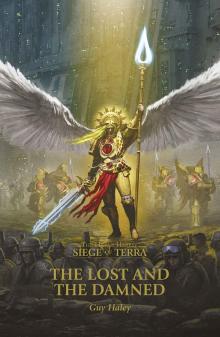 The Lost and the Damned (The Horus Heresy Siege of Terra Book 2)
The Lost and the Damned (The Horus Heresy Siege of Terra Book 2)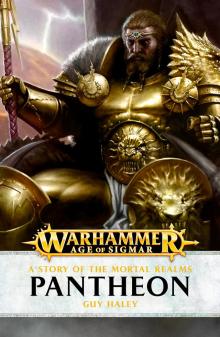 Pantheon
Pantheon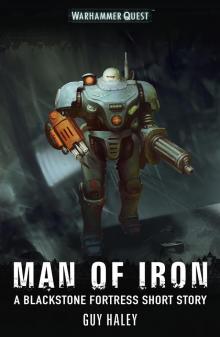 Man of Iron
Man of Iron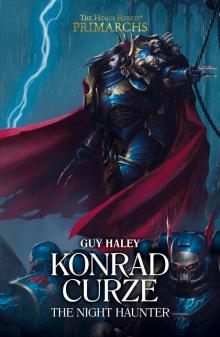 Konrad Curze the Night Haunter
Konrad Curze the Night Haunter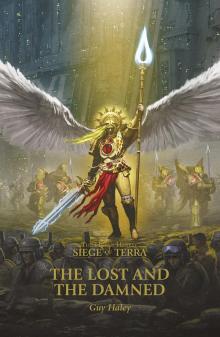 The Lost and the Damned
The Lost and the Damned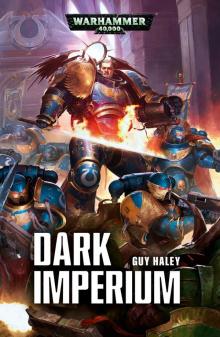 Dark Imperium
Dark Imperium Hoppo's Pies
Hoppo's Pies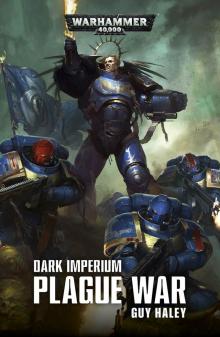 Dark Imperium: Plague War
Dark Imperium: Plague War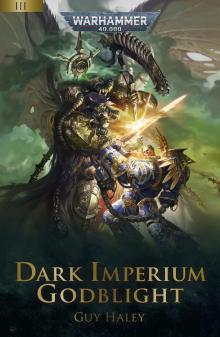 Dark Imperium: Godblight
Dark Imperium: Godblight Crash
Crash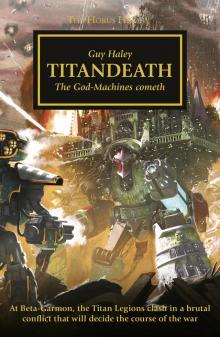 Titandeath
Titandeath Corax- Lord of Shadows
Corax- Lord of Shadows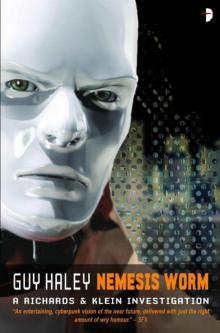 The Nemesis Worm
The Nemesis Worm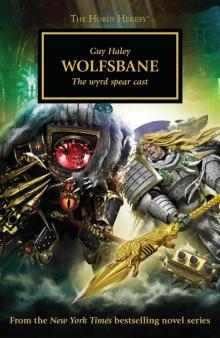 Wolfsbane
Wolfsbane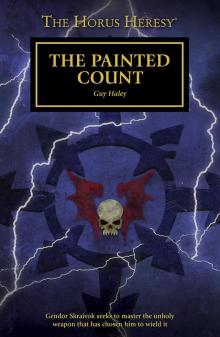 The Painted Count
The Painted Count The Death of Integrity
The Death of Integrity Perturabo: Hammer of Olympia
Perturabo: Hammer of Olympia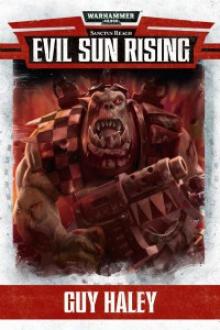 Evil Sun Rising
Evil Sun Rising The Emperor's Railroad
The Emperor's Railroad Shadowsword
Shadowsword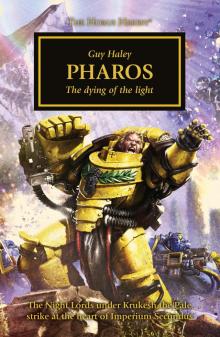 Pharos
Pharos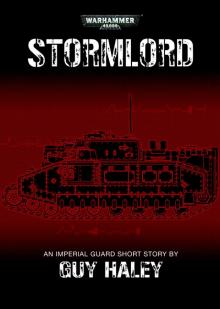 Stormlord
Stormlord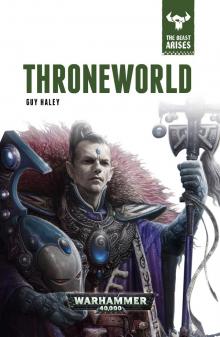 Throneworld
Throneworld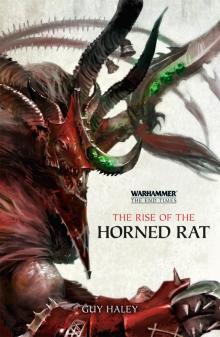 The End Times | The Rise of the Horned Rat
The End Times | The Rise of the Horned Rat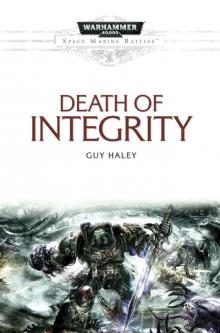 Death of Integrity
Death of Integrity Omega Point
Omega Point Omega point rak-2
Omega point rak-2 Dante
Dante The Ghoul King
The Ghoul King The Devastation of Baal
The Devastation of Baal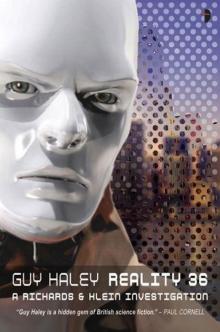 Reality 36: A Richards & Klein Novel
Reality 36: A Richards & Klein Novel The Rite of Holos
The Rite of Holos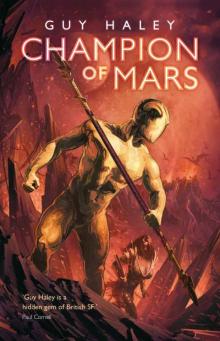 Champion of Mars
Champion of Mars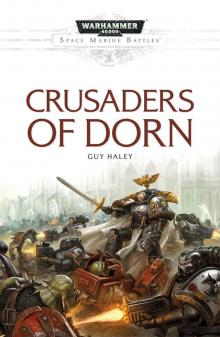 Crusaders of Dorn
Crusaders of Dorn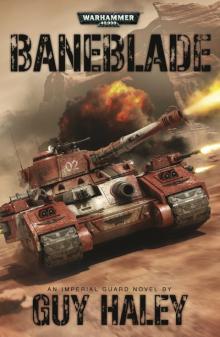 Baneblade
Baneblade